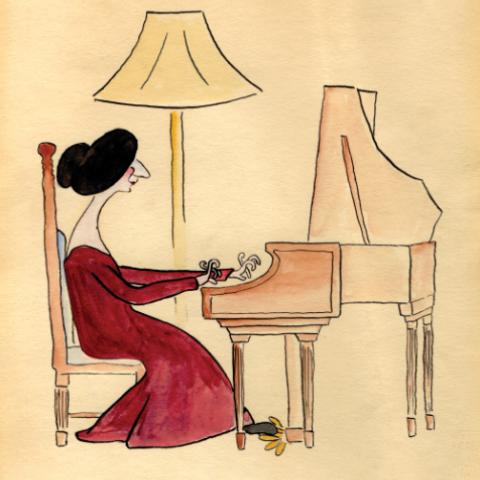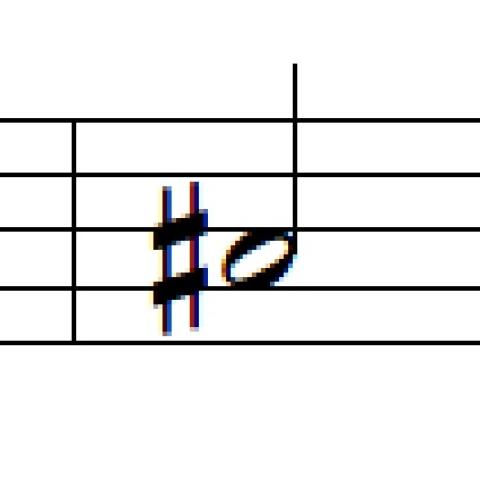
Program planning
I write this column just as July is about to give way to August; even as a retired academic, this autumnal month nurtures my urge to begin making plans for musical programs of the fast-approaching fall semester! It was my custom through all fifty-two years of university employment to present my faculty recital on the second Monday of September—one week after Labor Day. Sometimes I played both organ and harpsichord, occasionally only one or the other.
This past summer has been especially full of planning (and playing) organ recitals on two very special instruments. One is the 1762 Caetano-Oldovini single-manual organ housed in the Meadows Museum of Art, Southern Methodist University, Dallas, Texas, an instrument originally in Portugal’s Evora Cathedral, and, just incidentally, the oldest playable pipe organ in Texas. My two demonstration concerts for the Organ Historical Society during its first conference to be held in the Lone Star State and my tenth annual organ recital program in the TGIF Concert Series of Santa Fe’s First Presbyterian Church, a program and lecture that concluded the tenth anniversary celebration of the Fisk pipe organ, Opus 133, were two separate events that required differing repertoire to show the capabilities of these two very different instruments.
The choices that were made from the organ repertoire are no different than those I usually make when developing programs for harpsichord concerts. Thus, I hope that my thoughts on planning and audience reactions may be of some interest and use to our readers, no matter which instruments they may utilize.
First and foremost, I would suggest that lengthy programming of music by only one composer is generally best reserved for recordings (which allow the listener to choose from the selected repertoire and use the on/off switch if necessary). It seems to me that only a very few composers (such as J. S. Bach) are able to fill an entire program’s span and keep the audience’s attention without a danger of ensuing boredom. A lengthy work such as Bach’s Goldberg Variations is usually accepted with sincere affection and continued interest, especially if it can be done in my favorite form of performance for this monumental work: dividing the playing with another player, each of the two alternating variations on two different harpsichords. While I have only done this once with a brilliant graduate student, it seemed to me that the somewhat contrasting timbres of the two instruments and the respite it gave to each of us as players was beneficial in many ways.
As I was attempting to decide what I would want to play in Santa Fe this past July, I was inspired by an art exhibit that had been mounted earlier this year by the Meadows Museum, entitled Dali—Poetics of the Small, 1929–1936. It comprised a generous collection of works small in format that surveyed the great artist’s output during those early years of his career. The exhibition did not travel to any other venue, but an illustrated catalog is available from the museum, should one wish to investigate the visual stimulation that I tried to emulate with similarly shorter musical compositions from a wide variety of composers.
Thus Poetics of the Small did provide a program of short pieces in many styles and genres. Variety of this sort and careful attention includes choosing pieces both in major and minor keys (plus, perhaps, an occasional piece that detours to yet another idiom—maybe utilizing a mode), the variety of which may keep the ears free from boredom, open, and listening. Thus my Santa Fe program lasted about forty-five minutes (with the rubric that applause was to be withheld until the final chord was sounded), and it consisted of works by composers Healey Willan, César Franck (the program’s one lengthy piece, Fantaisie in C, which is made up of short sections), J. S. Bach, Herbert Howells, Dame Ethel Smythe, Germaine Tailleferre, Calvin Hampton’s Consonance for Larry (1957)—my first commission to the Oberlin classmate, for whom it was also his first commission—and Maurice Duruflé’s Fugue on the Bells of Soissons Cathedral, which I dared to end with a triumphant final major chord, rather than the repeated minor one.
The demonstrations of the 1762 organ were also presented within stringent time limits and with the necessity of including an audience-sung hymn, a requirement for every OHS convention program. Fortunately fulfilling my expressed desire for variety, it was possible to devise a twenty-five-minute program that did just that: a Tiento by Cabanilles was followed by my SMU colleague Simon Sargon’s Dos Prados (From the Meadows) composed at my suggestion in 1997—a stately pavane with variations that utilized every stop on the organ and showed, with particular beauty, the treble half-stop Sesquialtera that allows a melody to be played using the keys from middle C-sharp to the organ’s top C while playing an accompaniment using the notes from middle C down to the lowest C in a bass short octave. Also included were sonatas by Scarlatti and Seixas, the hymn Pange Lingua, and a rousing frolic by Lidon, using the full organ to give all the volume that one could possibly want.
So, I suggest that a wide-ranging variety of musical ideas can keep an audience interested in our historic instruments (or in the modern replicas thereof).
Another idea that I have been pursuing during my long career is the occasional introduction of quite unexpected works from the nineteenth- and early twentieth-century repertoires. I have mentioned some of these previously in various Diapason articles, but has anyone followed through with this idea? I would be interested in hearing from readers who may have done just that. Do not forget that Chopin composed a short Fugue in A Minor, found in his keyboard works; Schuman’s Fugue III on BACH from the organ works requires only a few pedal passages, all of which may be negotiated with the left hand on the harpsichord. Works by Herbert Howells, particularly his Lambert’s Clavichord, contain a selection of delightful pieces that may be played on any keyboard instrument (as I can attest to words that came directly from the composer’s mouth when I first queried him in his Royal College of Music studio in London), plus two volumes of Howells’s Clavichord that comprise many pages of beautiful music to be explored.
Of the Revivalist works, do not eschew Ferruccio Busoni’s Sonatina for Cembalo—not the easiest piece to adapt to the harpsichord, even though he mentions our instrument in the title, he manages to write as least several notes that do not exist on any harpsichord in my collection of instruments . . . . So rewrite a measure or two if needed, but enjoy the piquant harmonies and the very idea that this well-known musician felt compelled to write for our instrument. Francis Thomé’s Rigodon still ranks as one of the earliest pieces to be designated for harpsichord, as does Mulet’s Petite Lied, which has been published in all its small-format glory in an issue of this very journal.
For more recent works I return often to Duke Ellington’s A Single Petal of a Rose (dedicated to Antoinette Vischer, although it had been written earlier for Queen Elizabeth II). It is a piece that is, to my knowledge, unpublished except for the facsimile in a book about the Swiss patroness. I base my own performance copy on an arrangement sent to me in 1985 by Igor Kipnis, who credited jazz great Dave Brubeck as co-arranger. I make many adjustments to cope with wide hand stretches and to keep the feeling of a jazz improvisation, and I can report that it is always an audience toe-tapping favorite.
Among a host of contemporary composers I have my favorites such as Vincent Persichetti, Gerald Near, Neely Bruce, Glenn Spring, Rudy Davenport, Knight Vernon, Timothy Broege, and William Bolcom—all of whom write beautifully and knowledgeably for the harpsichord. To peruse the literally hundreds of possible twentieth-century works, see Frances Bedford’s magisterial catalog, Harpsichord and Clavichord Music of the Twentieth Century (Fallen Leaf Press, Berkeley, California, 1993).




